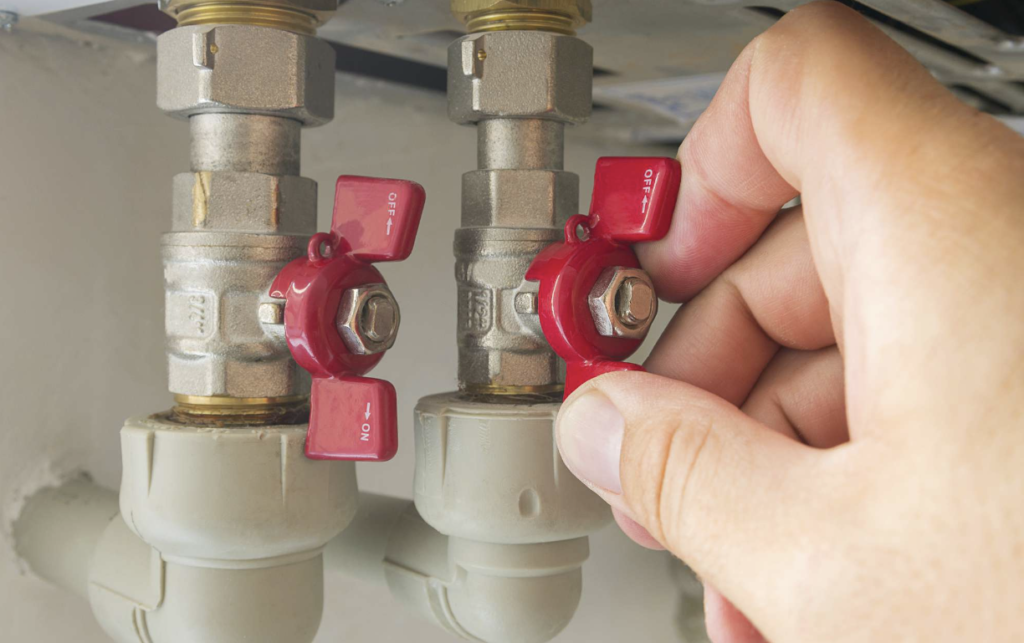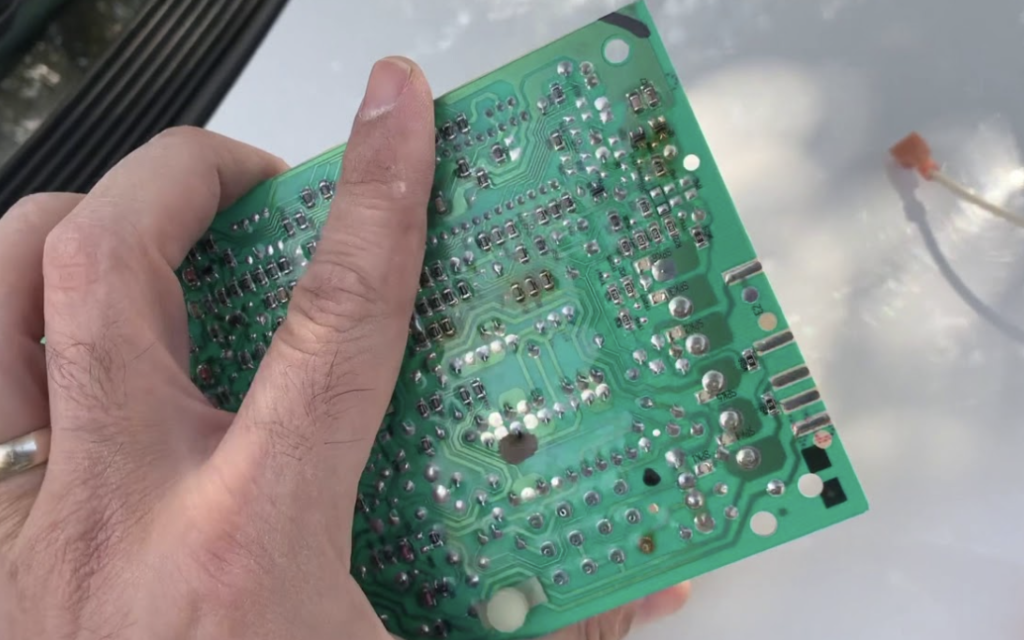Furnace Gas Valve Not Opening? Find out why and how to fix it.
Furnace Gas Valve Not Opening can be stressful but this guide will take you through on how to fix the problem.A working furnace is necessary to maintain a warm and cozy home, particularly during the bitterly cold winter months.
For it to function well, there must be a constant and uninterrupted supply of gas. Your home may become bitterly chilly if your furnace experiences the frustrating problem of no gas flow.
Do not worry, though; we will examine the likely culprits for this issue and offer insights into workable solutions.
Related post>>>>Furnace leaking water when ac is on.
The gas valve on the furnace is frequently where the problem is at its core. This essential component controls the natural gas flow into the ignitor, which ignites the burner’s flames with the help of a spark.
Your furnace won’t work, leaving you shivering in the cold, if the gas valve isn’t opening as it should.
At a glance: Furnace Gas Valve Not Opening due to Faulty Gas Valve,A Faulty Control Board,Limit Switch is Open or Tripped or The Gas Reserve is Empty.
The gas valve itself is one potential offender that has to be looked into. It can be stuck or broken, preventing the burner from receiving the necessary gas supply.
The limit switch should also be examined because it occasionally contributes to the gas valve not opening. The usual heating cycle is interfered with if the limit switch is open, leaving your home cold.
It’s critical to measure the voltage at the wires that supply power to the gas valve in order to further diagnose the problem.
Any electrical issues that are preventing the gas valve from opening properly can be found using a voltage reading.
When dealing with furnace problems, you must, however, proceed with caution, especially if you have no prior experience with furnace repair. Safety dangers can arise from gas-related issues, and making repairs without the necessary understanding could make things worse.
Therefore, it is advised to seek the advice of a skilled HVAC professional in times of doubt or when dealing with gas-related concerns, such as a furnace gas valve that won’t open.
Their expertise and education guarantee a secure and efficient solution to your furnace problems.
In the sections that follow, we’ll examine the typical reasons why a furnace gas valve won’t open and offer thorough instructions on how to fix these problems, giving you the knowledge, you need to make your house warm and comfortable once again.
Causes and Fixes of a Furnace Gas Valve Not Opening.
1.Faulty Gas Valve.

When trying to solve the frustrating problem of a furnace gas valve not opening, a defective gas valve can frequently be the culprit.
This vital part serves as the entry point for gas into your furnace, and when it breaks down, the entire heating system is disrupted, leaving you in the cold.
Imagine that as soon as you turn on your furnace, the control board excitedly transmits the signal for the gas valve to open. Your furnace is ready for action.
This supposedly straightforward process, however, becomes challenging in situations where the gas valve is broken.
The valve stubbornly refuses to open in response to the control board’s command, depriving the ignitor of the essential fuel it requires to ignite the flames on the burner.
As a result, you continue to lack the warmth you so deeply want in your house.
The integrity of the valve itself should be one of the first things to be taken into account when a furnace gas valve won’t open.
Over time, valves may lose their functionality, get blocked, or develop internal problems that prevent them from opening fully.
This implies that even when the control board clearly signals to start the heating process, the gas valve can refuse to do so, resulting in an annoying standoff between your chilly home and the desired comfort.
It’s important to remember that gas valves are intricate mechanical parts that can deteriorate with time and use, just like any other type of machinery.
Regular upkeep can lengthen their useful lives, but ultimately, they may give way to wear and tear, leading to the furnace gas valve problem we’re addressing today.
In order to solve this issue, it is frequently necessary to swap out the damaged gas valve for a brand-new, totally functional one.
While capable of being completed by competent persons, this task should be approached cautiously.
Safety is of the utmost importance when handling gas-related problems, so if you’re not experienced in furnace repair, getting professional help is a wise move.
Also read>>>>Furnace Keeps Turning on and off.
How To Fix Faulty Gas Valve.
It’s crucial to move cautiously and put safety first if you discover that your furnace’s gas valve won’t open.
While some would recommend giving the gas valve a “whack” as a possible quick remedy, caution is very necessary to prevent harming your furnace or creating any safety risks.
Here is a step-by-step explanation on how to correctly fix a malfunctioning gas valve:
- Switch Off the Furnace: As a preliminary step, turn off the furnace completely. This ensures that there’s no electrical or gas activity while you work on the gas valve.
- Open the Furnace Door: Access the inner workings of your furnace by opening the furnace door. Ensure that you have adequate lighting to see what you’re doing.
- Locate the Gas Valve: Find the gas valve within the furnace. It’s typically located near the burner assembly or in close proximity to the gas supply line.
- Disconnect Wiring and Gas Supply Tube: To replace the gas valve, you’ll need to disconnect all wiring connected to it. Make sure to label or take note of the wire connections to ensure proper reassembly. Additionally, disconnect the gas supply tube from the valve.
- Remove the Faulty Gas Valve: Carefully remove the faulty gas valve from its mounting position within the furnace. Be gentle during this process to avoid causing any damage to surrounding components or the gas supply line.
- Install the New Gas Valve: Replace the old gas valve with a new, compatible one. Ensure that it’s securely and properly fitted into the furnace.
- Reconnect Wiring and Gas Supply Tube: Reattach all the wires to the new gas valve, following the labels or notes you made earlier. Reconnect the gas supply tube, making sure it’s tightly secured.
- Test the Furnace: Before closing the furnace door and turning the furnace back on, it’s crucial to test the new gas valve’s functionality. Switch the furnace on and observe whether the gas valve opens correctly, allowing the flow of gas to the ignitor.
- Close Up the Furnace: If the new gas valve operates as expected, close the furnace door securely.
While some DIY experience may be helpful for this process, it’s crucial to stress that it’s always safer to talk with a licensed HVAC specialist if you’re not confident or skilled with furnace repairs.
Gas-related problems can be dangerous, thus specialist knowledge guarantees that the replacement is carried out correctly and safely.
Also read>>>>Furnace high limit switch.
2.A Faulty Control Board.

It’s important to take into account all potential culprits, not just a defective valve, while dealing with the frustrating situation of a furnace gas valve not opening.
While a broken gas valve is a typical suspect, it’s also crucial to look into the potential that the control board is broken.
The control board is the brain that directs the operation of your furnace. The control board sends a signal to the gas valve when you start the furnace by turning it on.
The gas valve is instructed to open by this signal, which is a green light, allowing gas to flow into the heating system.
However, if this important signal is not received by the gas valve, it will remain tightly closed, which will cause the annoying lack of heat in your home.
The control board essentially conducts the furnace’s symphony, coordinating the numerous parts to function in unison.
The failure of the gas valve to open is just one dissonant note in the symphony of heating, which is disrupted when it malfunctions and throws off the rhythm.
You can run some diagnostic tests to determine whether the control board is actually the cause of the furnace gas valve not opening.
These tests are intended to give you more assurance in your diagnosis so you may start thinking about a replacement.
However, bear in mind that troubleshooting electrical components needs a certain level of competence, so it’s advisable to seek the help of a qualified HVAC technician if you don’t feel comfortable or knowledgeable in this field.
In order to make sure the control board is giving the right signals to the gas valve, testing normally entails checking for voltage and continuity. A issue with the control board may be indicated by a lack of voltage or continuity.
How To Fix A Faulty Control Board.
If you have the correct equipment—a multimeter—testing for a defective control board in the case of a furnace gas valve not opening can be a simple procedure.
This indispensable tool enables you to precisely monitor voltage and identify electrical faults. Here is a step-by-step instruction sheet for carrying out this test:
- Access the Gas Valve: Begin by opening the furnace door to access the gas valve. Locate the gas valve within the furnace. You don’t need to remove the gas valve for this diagnostic test.
- Prepare the Multimeter: Ensure that your multimeter is set to measure voltage. Most multimeters have a voltage setting that can be adjusted to the appropriate range for your test.
- Test the Voltage: Using the multimeter, carefully test the voltage at the two wires that run from the control board toward the gas valve. These wires are responsible for transmitting the signal from the control board to the gas valve.
- Interpreting the Reading: If your multimeter provides no voltage reading or a significantly low voltage reading, it suggests that the control board is not sending the necessary signal to the gas valve. This is a strong indicator that the control board is indeed the problem, causing the furnace gas valve not to open as it should.
- Consider Control Board Replacement: In the scenario where you’ve determined that the control board is the likely culprit, the best course of action is to replace it. Replacing a faulty control board will restore the proper functioning of your furnace, allowing it to open the gas valve and provide the heat your home needs.
For individuals with some electrical experience, diagnosing and replacing a control board can be a do-it-yourself effort, but it’s important to emphasize safety and skill in this area.
It is strongly advised to seek the help of an experienced HVAC professional if you have any doubts about handling electrical components or if the control board is situated in a challenging or difficult-to-reach location inside the furnace.
Also read>>>>FURNACE SHUTS OFF AFTER 30 SECONDS.
3.Limit Switch is Open or Tripped.
The limit switch is a protector of your home’s security and the health of the furnace in the complex orchestra of your HVAC system.
This understated but essential part is intended to keep your furnace’s operating temperature within acceptable limits.
As if in response to a symphonic crescendo, the limit switch activates when the furnace’s temperature rises too high, protecting you and your heating system.
When activated, it is known as an open limit switch and serves as your furnace’s major safeguard against overheating.
Similar to a conductor losing control of an orchestra, an overheating furnace is a bad situation that can harm the furnace and set off a cacophonous symphony of issues throughout your house.
The involvement of the limit switch is a preventative action to defend against potential disasters. Imagine a situation where the furnace continues to heat up past the point at which it is safe.
In the worst case scenario, this might cause essential components to suffer serious damage and present a fire risk.
The limit switch acts as a sentinel, ready to take action when the temperature exceeds permissible thresholds, to prevent such crises.
The limit switch rapidly cuts off the gas supply when it trips, acting as a decisive conductor’s baton. By stopping the flow of gas, a safety mechanism prevents further heating and eliminates the dangers of an overheating furnace.
The limit switch is an essential safety guardian, but it can also contribute to the annoying problem of a furnace gas valve that won’t open.
The gas valve may unintentionally be prevented from opening if the limit switch is mistakenly activated or if it is not correctly reset after an earlier overheat occurrence, leaving you without heat when you most need it.
In such circumstances, troubleshooting the limit switch and making sure it is in working order become crucial.
The limit switch can assist prevent erroneous triggers and guarantee that it does not interfere with the functioning of your furnace by receiving routine maintenance and inspection.
How To Fix the issue of Limit Switch is Open or Tripped.
For your home to get warm again, you must take the proper action to resolve the difficulty of a furnace gas valve that won’t open owing to an open or tripped limit switch.
Here is a step-by-step tutorial on how to analyze and fix this issue:
- Reset the Limit Switch: Your initial course of action should be to attempt to reset the limit switch. To do this, consult your furnace’s owner’s manual to locate and gain access to the limit switch. It’s typically found within the furnace’s cabinet or near the burner assembly.
- Check for an Open Limit Switch: Examine the limit switch to determine if it’s in the open position. If it is, follow the manufacturer’s recommended procedure for resetting the limit switch. This typically involves pressing a reset button or flipping a small switch on the limit switch itself.
- Turn On the Furnace: After resetting the limit switch, switch your furnace back on and observe its operation. If the reset was successful and the limit switch wasn’t triggered due to overheating, you should see the furnace ignite. This indicates that the gas supply has been restored, and your furnace should begin heating your home again.
- Monitor for Repeated Tripping: If, after resetting the limit switch, your furnace still fails to ignite or if the limit switch trips again shortly after resetting, this suggests an ongoing issue with overheating. In this case, it’s crucial to address the underlying problem rather than repeatedly resetting the limit switch.
- Consider Replacing the Limit Switch: When the limit switch continues to trip, it’s a sign that there may be a persistent overheating problem within your furnace. In such instances, it’s advisable to replace the limit switch. A malfunctioning limit switch can compromise safety and prevent the gas valve from opening when necessary.
- Seek Professional Assistance: Replacing a limit switch, especially if it’s due to a recurrent overheating issue, may require the expertise of an HVAC technician. They can assess your furnace’s temperature regulation system and identify and rectify the root cause of the overheating problem.
4.The Gas Reserve is Empty.
The gas tank, a frequently disregarded but essential part of your furnace, is crucial to how well it works. Imagine it as the fuel source that fuels the flame in your furnace and warms your home.
Even the most dependable gas tank, however, has its limits, and when those limits are reached, difficulty might ensue, which could result in the undesirable scenario of a furnace gas valve not opening.
Every homeowner would be wise to know the gas tank’s capacity and to keep a close eye on its level. There is only a limited amount of gas in the gas tank, so when it runs out, there is nothing left to power your furnace when you turn it on.
No matter how hard you want it to move, it won’t move if you try to start a car with an empty gas tank.
It’s a good idea to routinely check the gas tank’s level in order to prevent the inconvenience and discomfort of a furnace gas valve that won’t open due to a depleted gas reserve.
A lot of contemporary furnaces come with monitoring devices that can let you know when the gas supply is getting low.
Similar to your car’s fuel gauge, these built-in warnings are a useful utility that show when a refill is required.
These warnings can take many different forms, from straightforward indicator lights to more sophisticated digital displays that show the gas level in real time.
When you get one of these warnings, it’s an indication that you need to act right away. If you don’t, your furnace might not start when you need it most, leaving you without heat while you look for a fix.
Also read>>>>>Thermostat turned off but still blowing air.
How To Fix Empty Gas Reserve.
Depending on the furnace model you have in your home, there may be several steps to check for and fix an empty gas reserve.
A more hands-on approach could be necessary with some furnaces, while others may provide user-friendly automatic gas level overviews. Here is how you can respond to it:
- Automatic Notification System: Some furnaces are equipped with a convenient notification system that signals when the gas reserves are running low. Look for an indicator light on your furnace. Typically, this light will be red when the gas reserves are low or empty. If you see the red light, it’s a clear sign that it’s time to get the gas tank refilled. This system makes monitoring gas levels straightforward and hassle-free.
- Manual Gas Tank Inspection: If your furnace lacks an automatic notification system, you can manually check the gas tank itself. Locate the gas tank, which is usually situated near or within the furnace. On occasion, you may find a pressure meter attached to the tank. This meter offers valuable insights into the current gas level inside the tank. If the pressure gauge indicates that the gas reserve is running low, it’s a clear indicator that a refill is in order.
- Gas Tank Refill: When you’ve determined that the gas reserve is running low, it’s essential to promptly arrange for a refill. Contact your trusted gas supplier or HVAC service provider to schedule a refill of the gas tank. Ensuring a steady and sufficient gas supply is crucial to prevent the inconvenience of a furnace gas valve not opening when you need heat the most.
Also read>>>Furnace high limit switch.
Frequently Asked Questions (FAQs)
What could be the cause of my furnace gas valve not opening?
A furnace gas valve not opening can have several potential causes. Common culprits include a faulty gas valve, a malfunctioning control board, a tripped or open limit switch, or an empty gas reserve in the tank.
How can I determine if the gas reserve in my furnace is running low?
The method of checking gas reserves varies by furnace model. Some furnaces have automatic notification systems that display a red light when the gas is low.
Others may feature pressure meters attached to the gas tank, indicating the gas level. Refer to your furnace’s manual or inspect the tank for these indicators.
What should I do if my furnace’s limit switch is tripped or open?
If your furnace’s limit switch is tripped, you can try resetting it according to the manufacturer’s instructions. If the switch keeps tripping, it may indicate an overheating issue, and professional inspection or replacement may be necessary.
How do I reset the limit switch on my furnace?
Consult your furnace’s owner’s manual to locate the limit switch and follow the manufacturer’s recommended procedure for resetting it. Typically, this involves pressing a reset button or flipping a small switch on the limit switch itself.
Can I replace the limit switch on my own?
While it’s possible to replace the limit switch yourself, it’s important to exercise caution, especially if you lack experience with electrical components.
If you encounter difficulties or are unsure, it’s safer to enlist the help of a qualified HVAC technician.
My furnace has a red notification light indicating low gas reserves. What should I do next?
When the red notification light on your furnace signals low gas reserves, it’s essential to arrange for a gas tank refill promptly. Contact your gas supplier or HVAC service provider to schedule a refill to ensure uninterrupted heating.
What should I do if my furnace’s gas valve remains closed, even after troubleshooting?
If your furnace’s gas valve remains closed despite troubleshooting, and you suspect it’s due to a faulty component or complex issue, it’s advisable to consult with a qualified HVAC technician.
Gas-related problems can pose safety risks, and professional expertise ensures a safe and effective resolution.
Conclusion.
Understanding and resolving the possible causes of a furnace gas valve not opening are essential for preserving warmth and comfort in the home heating sector.
We have looked at a number of potential causes for this situation, such as a malfunctioning gas valve, control board, trip limit switch, or low gas reserve.
The major lessons stress the value of routine maintenance, careful observation, and prompt response when necessary.
These actions, including as repairing parts, resetting limit switches, or filling the gas tank, guarantee that your furnace continues to be a dependable source of heat, enabling you to live comfortably at home throughout the coldest months.

